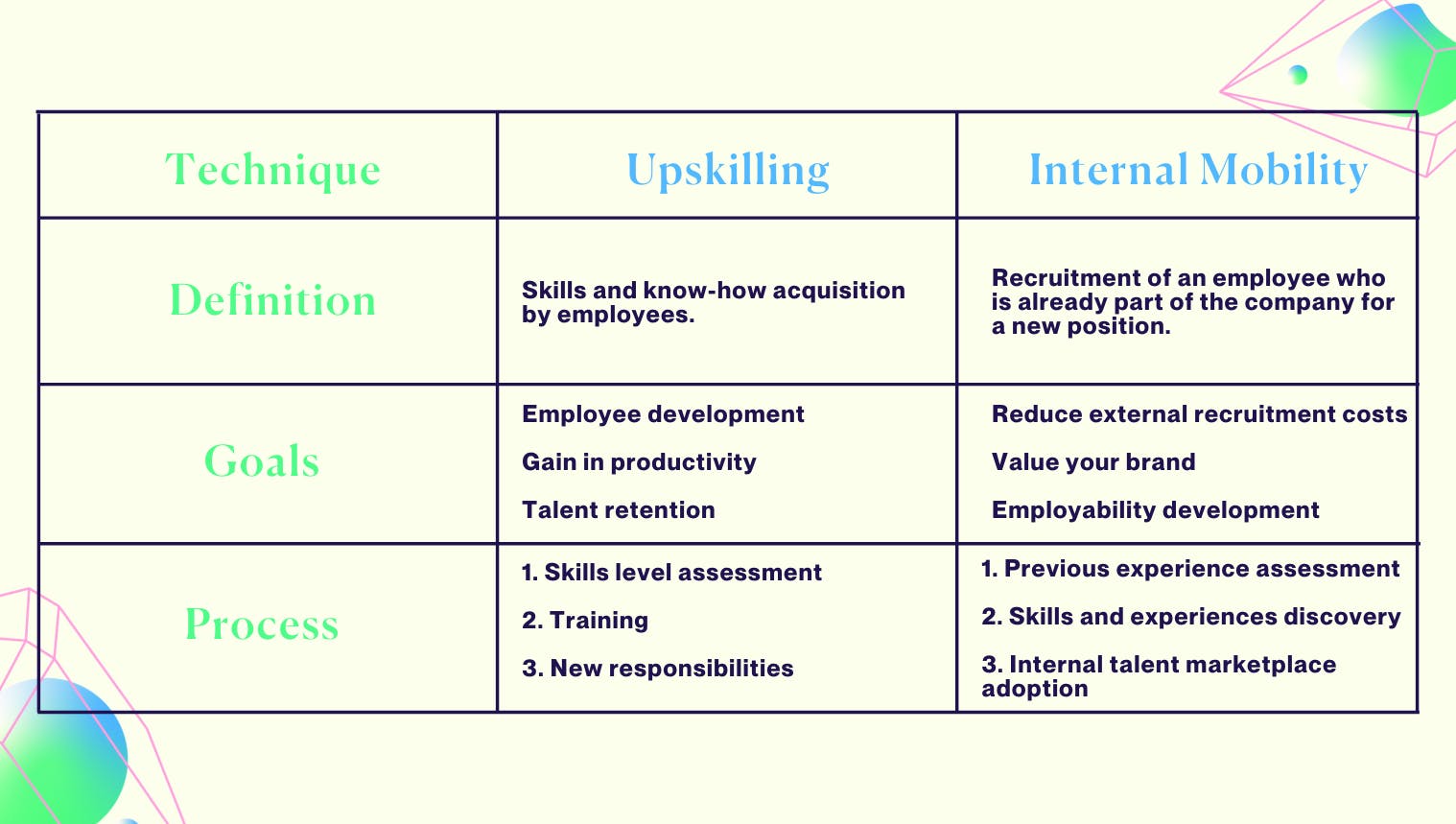Why upskilling is crucial for modern organizations

Upskilling, or the process of enhancing employees' skills, is a cornerstone of effective talent management. Not only is it a legal obligation for companies in many regions, but it also plays a vital role in fostering employee motivation and organizational performance. For example, frameworks like Strategic Workforce Planning agreements are designed to regulate and encourage skill development initiatives.
💡 Key definition: What is upskilling?
Upskilling refers to acquiring new knowledge and abilities to better perform one's job responsibilities. Training employees to expand their skillsets not only enhances their expertise but also opens the door for career progression. For small and medium-sized enterprises (SMEs), upskilling is both a motivational tool and a performance booster.
Knowing precise definitions and objectives is essential for crafting effective learning strategies and addressing specific organizational challenges.

7 compelling reasons to invest in upskilling
Upskilling is essential for any organization's success. However, to persuade leadership or departments outside HR, it's crucial to present convincing arguments. Whether implementing a new HR initiative or aligning with employees' expectations, the journey begins with understanding their needs. Here are seven reasons to champion upskilling within your organization:
1. Clarify expectations and address them effectively
A successful upskilling initiative starts with evaluating employees' skills and engaging in meaningful discussions about their career goals. This process allows HR to set clear objectives and design personalized career pathways.
- For HR: Gain a comprehensive understanding of workforce capabilities.
- For Employees: Share needs and enhance employability through tailored development plans.
2. Identify top talent
Upskilling also enables organizations to pinpoint their most talented employees. By analyzing CVs, individual profiles, and self-reported data, HR teams can uncover highly skilled individuals and build expert teams.
- For HR: Access real-time insights into top-performing employees.
- For employees: Gain recognition and new opportunities to expand their expertise.
3. Foster synergy across teams
From a structural perspective, upskilling enhances collaboration between HR, managers, and employees. Unlike external hiring, internal upskilling leverages employees' familiarity with the company culture, streamlining processes and fostering talent retention.
- For HR: Retain and nurture internal talent.
- For managers: Strengthen relationships with employees by actively participating in development plans.
4. Expand opportunities and boost engagement
Upskilling opens doors to new opportunities, reducing turnover and driving employee engagement. Employees equipped with new skills feel more confident, motivated, and productive.
- For HR: Optimize workforce capabilities and engagement.
- For employees: Experience a positive dynamic and improved career prospects.
Personalized career pathways further enhance this process, making each employee's journey unique. Leveraging tools like 365Talents helps organizations offer tailored training, mentoring, and mobility opportunities aligned with individual goals.
365Talents places employees and their skills at the center of upskilling strategies. By leveraging AI, the platform offers:
- Personalized learning paths: Tailored training recommendations based on employees' skills, ambitions, and interests.
- Integrated skill data: Centralize and unify skill repositories to seamlessly align with LMS platforms like EdFlex, 360Learning, and RiseUp.
- Actionable insights for managers: Identify team strengths and address skill gaps proactively.
For employees, 365Talents fosters engagement through customized career journeys, mentoring opportunities, and mobility suggestions. For HR and managers, it enhances decision-making and ensures skill development aligns with business objectives.
By integrating 365Talents into your LMS, you empower employees to take charge of their professional growth while optimizing organizational performance.








5. Empower managers
Managers play a pivotal role in upskilling initiatives. Acting as advisors and guides, they bridge the gap between HR and employees, ensuring skill development plans align with both organizational and individual goals.
- For HR: Gain actionable insights from managers to refine HR strategies.
- For Managers: Strengthen involvement in employee development, fostering trust and collaboration.
6. Promote career growth
While upskilling focuses on enhancing existing skills, reskilling introduces employees to entirely new competencies. Together, these approaches drive career advancement and improve workplace satisfaction.
Example: A manager notices strong teamwork and initiative in their team but identifies gaps in technical skills. Upskilling addresses these gaps, enhancing performance, while reskilling introduces new capabilities for long-term growth.
- For HR: Retain talent and motivate employees to embrace new challenges.
- For employees: Gain access to training programs that support career evolution.

Example
A manager tells you that his team gets on well together, takes initiative and helps each other out. According to him, these skills are very important in their day-to-day work. However, since the end of compulsory teleworking, the manager has noticed that certain technical skills are below market expectations.
Upskilling will enable you to update their existing knowledge to boost performance. On the other hand, reskilling will be a way of teaching an employee new key skills.
The two are therefore compatible and together promote the professional development of employees and the improvement of the working environment. In this way, these methods retain talent and motivate them to take on more challenges. It's similar to a promotion and step system, where training can be integrated.
7. Stay competitive
Investing in upskilling ensures long-term organizational growth. By aligning workforce skills with market demands, companies boost productivity and maintain a competitive edge.
- For HR: Develop future-ready solutions that address external challenges.
- For employees: Build confidence in their roles within a competitive organization.
Discover more HR insights












